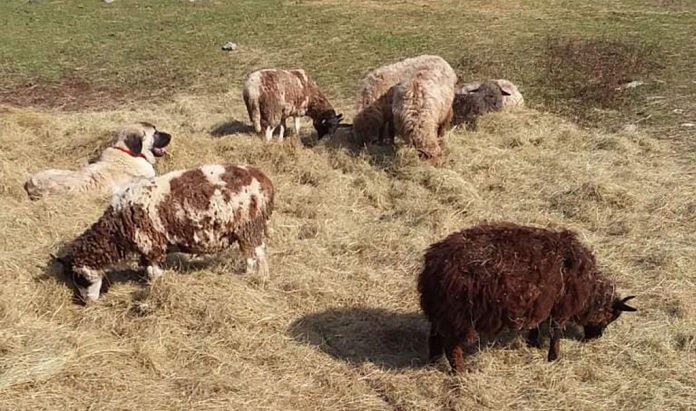
Note from Farm and Dairy Editor-in-Chief Rebecca Miller:
I first encountered Tarma Shena when I read a story she wrote about one of her livestock guardian dogs, named Mimi. It was a fantastic story, one of intelligence, drive, cunning and heart. Almost two years later, one of Mimi’s daughters is the heartbeat of my commercial sheep farm’s expanding livestock guardian dog corps.
In that time, Tarma has become a mentor and a friend. She has taught me a lot about understanding and working with my livestock guardian dogs, and with animals, in general. She showed me that it’s OK to expect much of these dogs — both as co-workers and as partners in life — because they are capable of more than we often expect.
Increasingly, people are choosing to purchase these dogs for their farms, ranches and homesteads. I am excited to introduce this column, for those looking for expertise on how to train well-rounded, adaptable and capable guardian dogs that can be an integrated part of your life and your work.
How it began
I grew up on a farm, an honest-to-goodness, raise-your-own-food farm. We grew and canned, raised and butchered, picked and stored.
I also grew up in a time when living without power — it meant you were poor white trash. When you didn’t tell your friends at school that it was rabbit in your lunch or that the milk in your Thermos was from a goat. Processed goods and name-brand grocery items were becoming a sign of affluence.
I’ve lived long enough to see things come full circle. Now we are “off grid” and “practice sustainability.” Perception is an amazing thing.
As an adult I moved away, but it seems farming was in my blood. My mother’s farm has changed a lot since kids grew up and moved away, and there were fewer mouths to feed.
Enter, livestock guardians
Now, I find myself back on that childhood property, working to bring that same farm back to the level of production that I remember with the mixed emotions of childhood. An interest in genetics found me breeding ducks, and foxes sent me looking for help.
Livestock guardian dogs were mostly unheard of on the East Coast at the time. I went looking for the farm dogs of my childhood, and found unicorns instead.
My whole world changed, from the way I interacted with canines, to my expectations about their behavior. Gone were the days of treat motivation and total adoration. Here was an animal with the ability to think for itself and have goals and agendas that did not always mesh with mine.
To my surprise, falling back on my experiences with horses would save the day. Pressure, release and the path of least resistance became my tools.
Kyra, my first livestock guardian dog, became the partner I didn’t know I was missing. We struggled a bit those first years. Nothing I read or researched seemed to apply to my situation.
Common sense
At some point, I stopped researching and started applying common sense and mutual respect to our relationship. I never guessed that those first steps would start the journey to where I am today.
Six thousand miles and 10 more dogs later, I raise heritage breed sheep, cows and LGDs at Farei Kennels, in Maine. It is located on a heavily wooded, remote piece of property, surrounded by tracts of wilderness and a healthy population of predators.
Farei Kennels’ training program utilizes these dogs, within the context of a historical shepherding perspective. One that proves their intelligence, versatility and loyalty are perfect for the modern farming framework. When applied correctly, we find that it’s not the size of the acreage or the number of predators, but the dedication of the shepherd that motivates these incredible animals to do what they do.
I am the shepherd. I am the line.













I am so thankful for all that you do! Know that a voice of reason is hard to find and I for one appreciate your honesty and truthfulness!
Thank you for this great article! She should seek to publish this in several magizines! Best wishes!
Looking forward to more. From Oregon.
I have an older Anatolian, not knowing that he is an escape artist. I’ve tried electric and a tire. How do I start a retraining program?
You are welcome to check out Farei Kennels on FaceBook
I live in North Texas. Is there any training available in my area? I have three Pyrenees’s and they even jump our electric fence.
You can find us at http://www.fareikennels.com